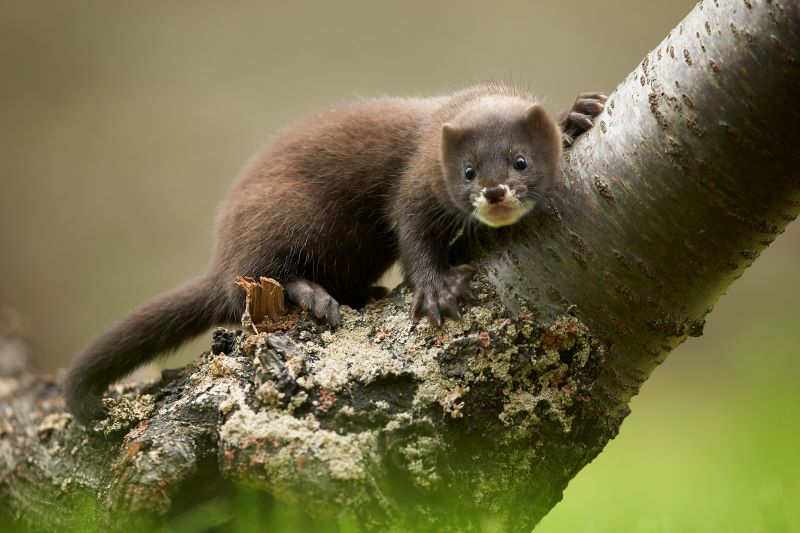
Improving the welfare of translocated individuals: European mink as a case study
Animal welfare can be compromised during conservation translocations, jeopardising efforts to restore biodiversity. This project investigates how improving welfare can positively impact reintroduction success in the critically endangered European mink.

Challenge
This research is important because the use of conservation translocations, and particularly breeding for reintroduction, is increasing as threats to biodiversity increase: many individual animals across different taxa (from insects to mammals) are being bred in captivity for release into the wild, undergoing challenges that compromise their welfare. We know captivity puts constraints that negatively affect cognitive, behavioural, physiological and physical traits - all traits that are important for animals to flexibly adapt to the wild following reintroduction. Therefore, focusing on maximising individual welfare from birth should also improve the success of these projects and their overall goal of restoring biodiversity.
The research focuses in one critically endangered species: the European mink. We are modifying their early life environments and management in ways that improve their welfare, and focusing on individual behaviours that we know indicate positive or negative welfare, as well as measuring their behavioural and physiological responses to stressors (e.g. from weaning to transport to exploring a new environment).
This is an international project, focusing initially on the two countries that are currently leading and have most experience breeding and releasing European mink into the wild: Estonia and Spain.
Solution
The research focuses in one critically endangered species: the European mink. We are modifying their early life environments and management in ways that improve their welfare, and focusing on individual behaviours that we know indicate positive or negative welfare, as well as measuring their behavioural and physiological responses to stressors (e.g. from weaning to transport to exploring a new environment).
This is an international project, focusing initially on the two countries that are currently leading and have most experience breeding and releasing European mink into the wild: Estonia and Spain.
Impact
This research will impact first and foremost, the individual European mink in these conservation breeding programmes, as well as other carnivores in similar programmes, as well as the scientific community, wildlife veterinarians, and the wider population
Partners
Funded by Wild Animal Initiative
In collaboration with: Lutreola Foundation, Species Conservation Breeding Centre at Tallinn Zoo, Fundación para la Investigación y el Estudio de la Biodiversidad, the University of Navarra, Tragsa
